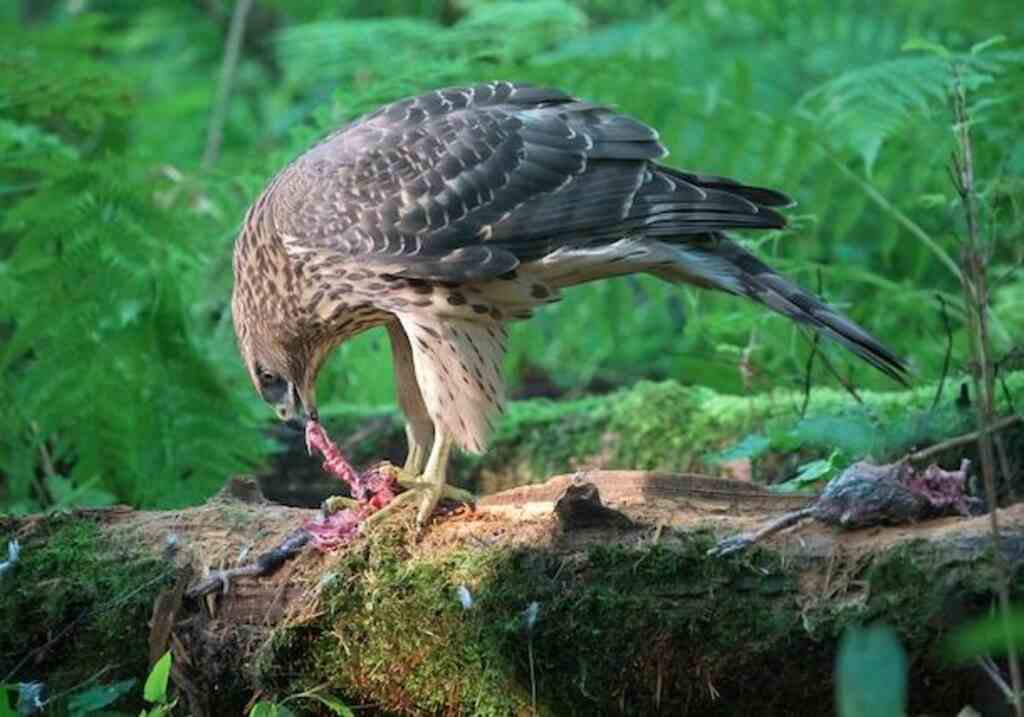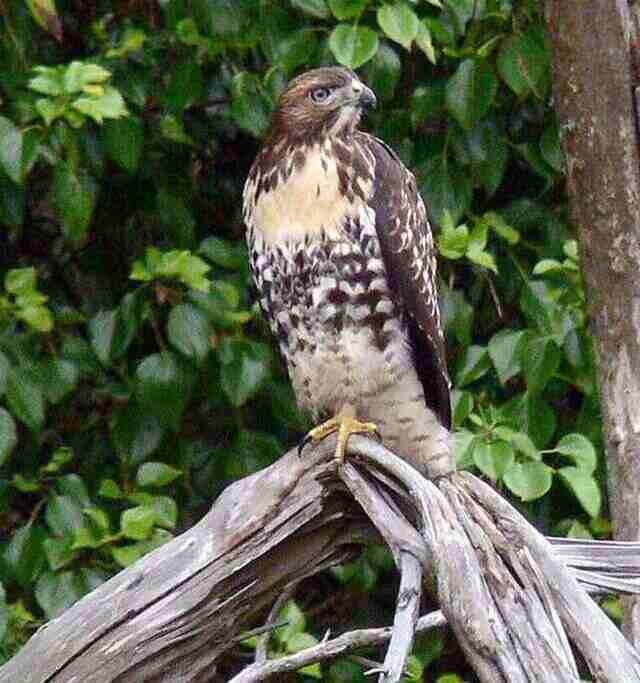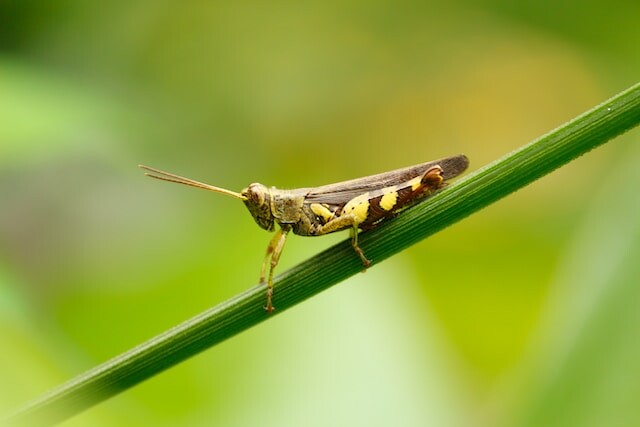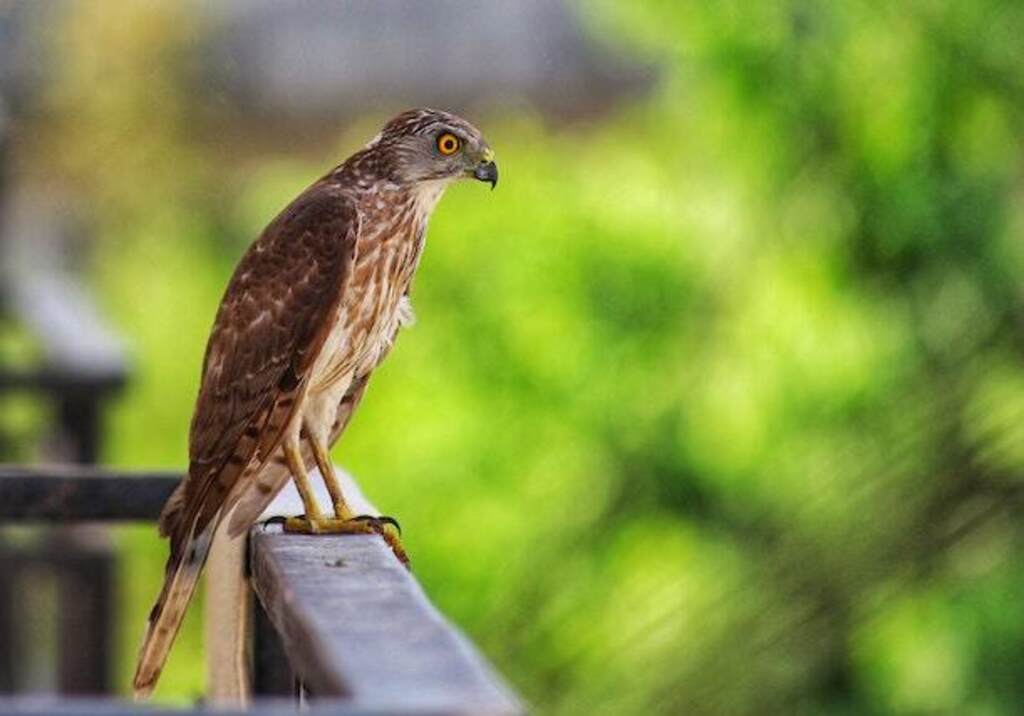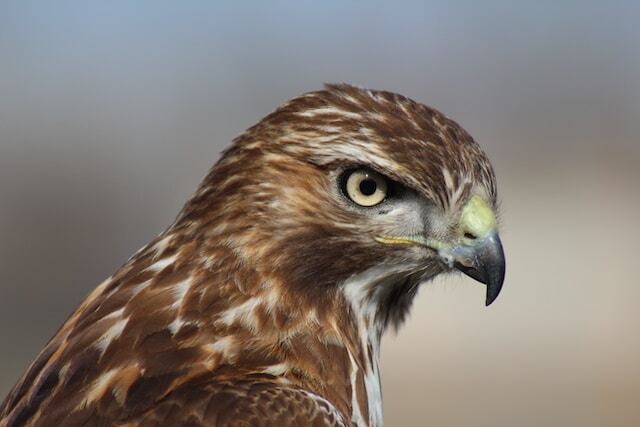Hawks are magnificent birds of prey that are known for their exceptional hunting skills and sharp talons. They belong to the family Accipitridae and are found all across the world.
Hawks have a diverse diet, and their ability to hunt a variety of prey has given them an evolutionary edge over other predators.
Hawks have been observed eating a wide variety of animals, ranging from rodents and small mammals to reptiles and other birds.
Some species even feed on insects such as grasshoppers. In this article, we will explore the intriguing question: do hawks eat grasshoppers?
Table of Contents
- 1 Overview of Hawks and Their Diet
- 2 Grasshoppers as Prey for Hawks
- 3 Hunting Techniques Used by Hawks to Catch Grasshoppers
- 4 Other Factors That Affect Hawk Diets
- 5 Conclusion
- 6 FAQs: Do Hawks Eat Grasshoppers?
- 6.1 Do hawks eat grasshoppers?
- 6.2 What other types of prey do hawks eat?
- 6.3 How do hawks hunt and capture grasshoppers?
- 6.4 Are grasshoppers a significant food source for hawks?
- 6.5 Which hawk species eat grasshoppers?
- 6.6 Do hawks eat grasshoppers exclusively?
- 6.7 Do hawks rely heavily on grasshoppers for nutrition?
- 6.8 How often do hawks eat grasshoppers?
- 6.9 Are grasshoppers a preferred food source for hawks?
- 6.10 Why are grasshoppers important for hawks’ diet?
- 7 Author
Mentioning Common Prey Items for Hawks
Hawks are apex predators, meaning they sit at the top of their respective food chains. They play an important role in controlling populations of smaller animals, particularly rodents and rabbits, which can cause significant damage to crops.
Some common prey items for hawks include small mammals such as mice, voles, shrews, squirrels, rabbits, and hares.
They also hunt other birds including doves, pigeons, quails, grouse, pheasants and even larger birds like ducks.
Reptiles such as lizards and snakes make up another part of their diet along with amphibians like frogs. Some larger species even feed on fish found in rivers or lakes.
Pose the Question: Do Hawks Eat Grasshoppers?
While we know that hawks eat a variety of animals for sustenance, there is still some uncertainty surrounding whether they consume grasshoppers as part of their diet. Grasshoppers are large insects that inhabit many parts of the world.
They belong to the order Orthoptera which includes crickets and katydids as well. These insects play an important role in various ecosystems by consuming plant material, which makes them herbivores.
Given that hawks are carnivorous predators, it is natural to wonder if they ever consume grasshoppers.
In the following sections, we will explore the idea of whether hawks eat these insects and what their dietary needs might be.
Overview of Hawks and Their Diet
The Physical Characteristics of Hawks
Hawks are a family of birds known for their sharp talons, hooked beaks, and keen eyesight. They range in size from the small sharp-shinned hawk (around 10 inches long) to the massive ferruginous hawk (up to 30 inches long).
Most hawks have broad wings and a streamlined body shape that allows them to fly quickly and maneuver through forests or open fields. One notable characteristic of hawks is their incredible eyesight.
Some species can see prey from more than a mile away, making them exceptional hunters. Additionally, hawks have excellent hearing that allows them to detect small prey moving on the ground.
Hunting Behavior of Hawks
Hawks are primarily diurnal hunters, meaning they hunt during the day. They use a combination of soaring and perching to locate prey from above.
Once they spot potential prey, hawks will swoop down at high speeds to capture their target with their talons. Hunting techniques vary depending on the species of hawk, as well as the type and location of prey.
Some hawks prefer hunting in open areas, while others hunt in dense forests. Some species rely on speed, while others use stealth or patience to capture their meals.
Typical Prey Items for Hawks
Most hawks are carnivorous predators that feed on a wide variety of animals. The specific diet varies depending on habitat type and geographic location.
Some common prey items for hawks include rodents such as mice and voles; birds like doves, quails, and pigeons; reptiles such as snakes; amphibians like frogs; insects such as grasshoppers; and even fish.
Birds make up a significant portion of most hawk’s diets because they are abundant in many habitats.
Rodents are another staple in the hawk’s diet because they are easy to catch and provide a good source of protein. Some hawks have also been observed eating snakes, lizards, or even insects like grasshoppers.
Grasshoppers as Prey for Hawks
Potential Food Source
Hawks are known to have a diverse diet, and grasshoppers can be an important part of it. Grasshoppers are excellent sources of protein for hawks, and they are relatively easy to catch.
Hawks often rely on quick movements to catch prey, and grasshoppers tend to move in the same way. This makes it easier for hawks to track them and catch them with their sharp talons.
In addition to their ease of capture, grasshoppers are also quite abundant in many areas where hawks reside.
While some species may migrate or have seasonal fluctuations in populations, many areas will have a stable population of grasshoppers that can provide reliable nutrition for these birds.
Nutritional Value
Despite being small in size, grasshoppers pack a nutritional punch for hawks. They are high in protein, which is essential for building strong muscles and maintaining healthy body functions.
In particular, juvenile hawks require a lot of protein during development, making grasshoppers an especially valuable food source.
Grasshoppers also contain important nutrients such as fat and calcium that aid in bone growth and overall health.
Additionally, they are low in fat compared to other common prey items such as mice or voles.
This means that hawks can consume more grasshoppers without risking excessive weight gain or other health problems associated with high-fat diets.
Examples of Hawk Species That Eat Grasshoppers
While not all hawk species eat grasshoppers regularly or at all, there are several examples of species that do include them in their diets.
The American Kestrel is one such example; this small falcon is known to hunt insects including grasshoppers, along with small mammals such as voles.
Another example is the Ferruginous Hawk, which resides in western North America.
These hawks have been observed eating grasshoppers, particularly during the summer months when they are most abundant.
Additionally, some species of Accipiters (a group of smaller hawks that specialize in hunting birds) have been known to consume grasshoppers as well.
The Cooper’s Hawk and Sharp-shinned Hawk are two examples of Accipiters that may incorporate grasshoppers into their diet when other prey options are scarce.
Overall, while not all hawk species eat grasshoppers regularly, these insects can provide valuable nutrition for those that do.
Their high protein content and abundance make them an attractive food source for many hawks.
Hunting Techniques Used by Hawks to Catch Grasshoppers
The Grasshopper Hunt
Hawks are skilled hunters and use various techniques to catch their prey. When it comes to hunting grasshoppers, hawks use a combination of speed, agility, and precision.
They will often hover over fields or grassy areas where grasshoppers are abundant, scanning the ground below for movement.
Once a hawk spots a grasshopper, they will swoop down towards it using incredible speed and force.
Sometimes they will dive from high above in the sky in order to catch their prey off guard. Timing is crucial when hunting grasshoppers, as these insects can quickly jump away if they sense danger.
To avoid this, hawks use their sharp talons to grasp onto the grasshopper mid-jump or mid-flight before taking it back up into the air.
This requires a great deal of skill and precision, as the hawk must calculate its trajectory and adjust its course accordingly.
Physical Adaptations
In addition to their hunting techniques, hawks have physical adaptations that make them particularly well-suited for catching grasshoppers. For example, hawks have sharp talons that are designed to grip onto prey with incredible strength.
They also have excellent eyesight which enables them to spot even small movements on the ground from high up in the sky. This helps them identify potential prey items such as grasshoppers more easily.
Furthermore, hawks are built for speed and maneuverability, which makes them ideal hunters of fast-moving insects like grasshoppers.
Their lightweight bodies allow them to make quick turns and sudden movements while in flight, which is essential when chasing after swift jumping targets.
Strategies for Success
Successfully hunting grasshoppers requires more than just physical prowess – it also requires strategic thinking on the part of the hawk. For example, hawks will often hunt in pairs or groups when targeting elusive prey like grasshoppers.
This allows them to encircle the area and cut off any escape routes for the insects.
Hawks will also use tactics like surprise attacks and ambushes to catch their prey off guard, which increases their chances of success.
Hawks are highly adaptable creatures and will adjust their hunting strategies based on the specific conditions they find themselves in.
For example, if grasshoppers are particularly abundant in a certain area, a hawk may opt to remain in that location for an extended period of time rather than moving on to new hunting grounds.
Other Factors That Affect Hawk Diets
Geographic Location
Hawks are found in a variety of habitats across the globe, ranging from deserts and grasslands to forests and wetlands.
The geographic location can play a significant role in determining what prey is available for hawks.
For example, hawks living in arid regions may have limited food options due to the lack of water and vegetation needed to support certain prey species.
In North America, some hawk species are migratory and travel long distances each year to take advantage of different food sources based on the season.
For instance, during the winter months, some hawks will migrate south where they can find more abundant food sources such as rodents.
Habitat Type
The type of habitat that a hawk lives in can also play an important role in its diet.
For example, hawks that live near bodies of water may have access to fish as a food source, while those that live in open grasslands may rely more heavily on rodents. Urbanization also has an impact on hawk diets.
As cities expand into natural habitats, birds of prey may struggle to find suitable hunting grounds and alternative prey items.
Some urban-dwelling hawks have adapted by learning how to hunt pigeons or other birds that frequent city streets.
Competition with Other Predators
Hawks are not the only predators hunting for food within their territories; there are many other animals competing for resources. In areas with high predator diversity, competition for food becomes more intense.
In these situations, some species adapt by switching their diet preferences or expanding their range.
For instance, if there is an increase in coyote populations within a particular region where hawks usually hunt small mammals such as rabbits and squirrels, they might switch over to hunting reptiles or birds instead.
Human Activities
Human activities such as agriculture, deforestation, and hunting can also affect hawk diets. For example, widespread pesticide use has led to a decline in the populations of small animals such as rodents and insects that hawks rely on for food.
Deforestation can alter habitat types, reducing the availability of prey for hawks.
Similarly, overhunting or poaching of large mammals by humans may lead to higher competition among predators for smaller prey items like rodents or birds. Many factors influence what hawks eat.
Geographic location, habitat type, competition with other predators, and human activities can all play roles in determining a hawk’s diet.
As human activity continues to impact natural landscapes around the world, it is important to monitor changes in predator diets and adapt conservation strategies accordingly.
Conclusion
After examining the available research, it seems that hawks do, in fact, eat grasshoppers. While these insects may not be a staple of the hawk diet, they are a valuable source of nutrition and can be found in many habitats where hawks live.
As we have seen, hawks are skilled hunters with a variety of strategies for catching prey.
When it comes to grasshoppers specifically, hawks may employ techniques such as soaring over fields or perching on low branches to spot their prey.
Once they have identified a target, they use their sharp talons and hooked beaks to secure the grasshopper and tear it apart for consumption.
While not all species of hawks have been observed eating grasshoppers, several studies have documented this behavior across different regions and habitat types.
For example, research from both North America and Europe has shown that red-tailed hawks (Buteo jamaicensis) will consume grasshoppers when they are available.
Overall, while much is still unknown about hawk diets and behavior in the wild, evidence suggests that these birds are adaptable opportunists who will take advantage of whatever food sources are available to them.
Whether hunting rodents or snatching insects out of the air, hawks play an important role in maintaining balance within ecosystems around the world.
FAQs: Do Hawks Eat Grasshoppers?
Do hawks eat grasshoppers?
Yes, hawks do eat grasshoppers. Grasshoppers are an important part of their diet, particularly during the summer months when they are more abundant.
What other types of prey do hawks eat?
Hawks have a diverse diet that includes small mammals like mice and voles, reptiles such as snakes and lizards, and birds. They are opportunistic hunters and will take advantage of any prey that presents itself.
How do hawks hunt and capture grasshoppers?
Hawks use their keen eyesight to spot grasshoppers from high in the sky. Once they identify a target, they swoop down and capture the grasshopper using their sharp talons.
Are grasshoppers a significant food source for hawks?
While grasshoppers may not make up a large portion of a hawk’s overall diet, they are still an important food source during certain times of the year when other prey is scarce.
Which hawk species eat grasshoppers?
Some hawk species that have been observed eating grasshoppers include red-tailed hawks, cooper’s hawks, and rough-legged hawks. However, not all species of hawks eat grasshoppers.
Do hawks eat grasshoppers exclusively?
No, hawks have a diverse diet and eat a variety of other prey besides grasshoppers. Their diet can include insects, small mammals, reptiles, amphibians, fish, and other birds.
Do hawks rely heavily on grasshoppers for nutrition?
Hawks do not rely heavily on grasshoppers for nutrition. While grasshoppers provide important nutrients, hawks have a varied diet to ensure they get all the necessary nutrients they need for survival.
How often do hawks eat grasshoppers?
The frequency at which hawks consume grasshoppers can vary depending on factors such as geographic location and time of year. During the summer months, when grasshoppers are abundant, some species of hawks may consume several dozen grasshoppers per day.
Are grasshoppers a preferred food source for hawks?
Grasshoppers are not necessarily a preferred food source for all hawk species. Hawks have different preferences based on their size, habitat, and hunting behavior. Some species may rely more heavily on grasshoppers than others.
Why are grasshoppers important for hawks’ diet?
Grasshoppers offer hawks a high protein food source that is easily digestible and readily available. While they may not be the primary food source, grasshoppers provide essential nutrients, especially during times when other preferred prey is scarce.


